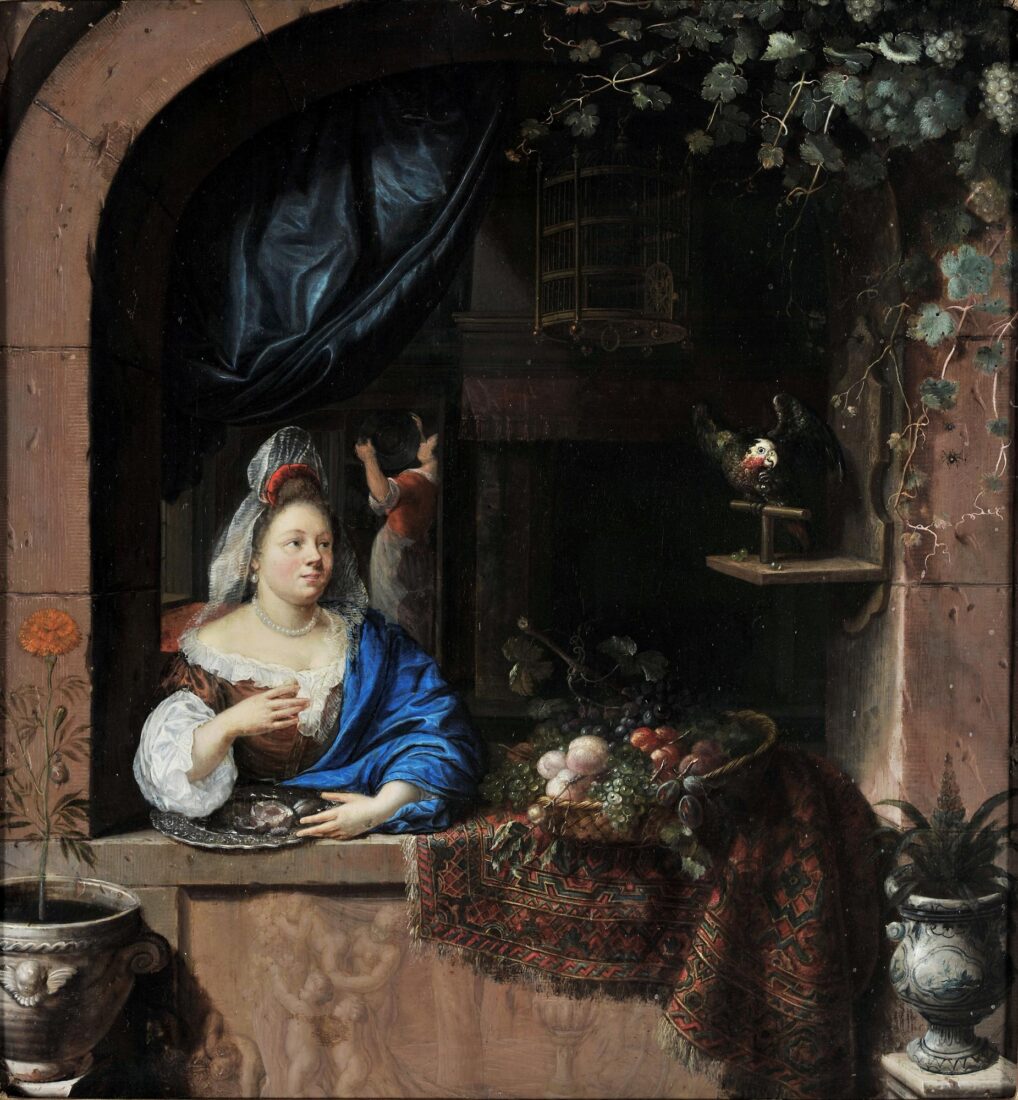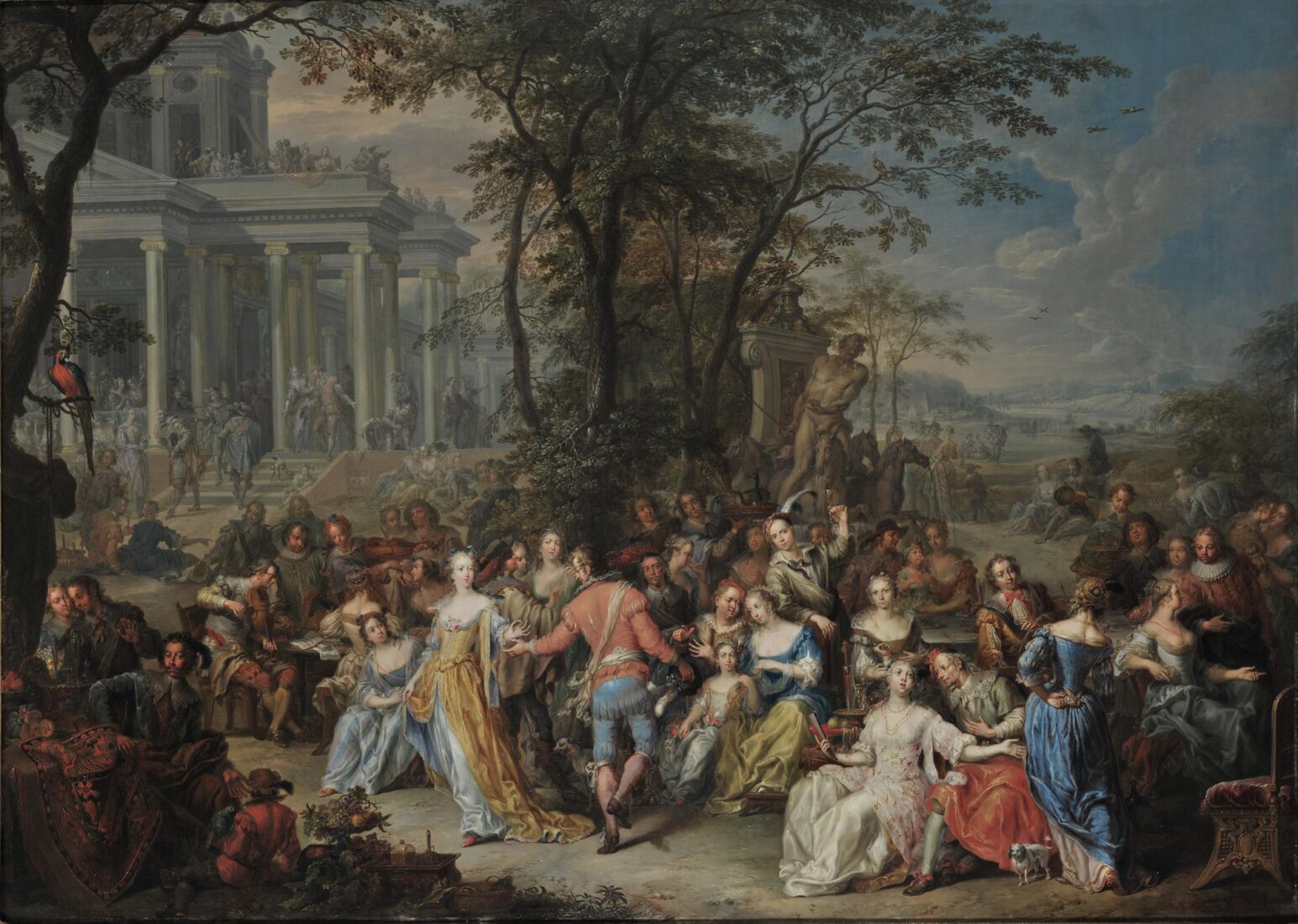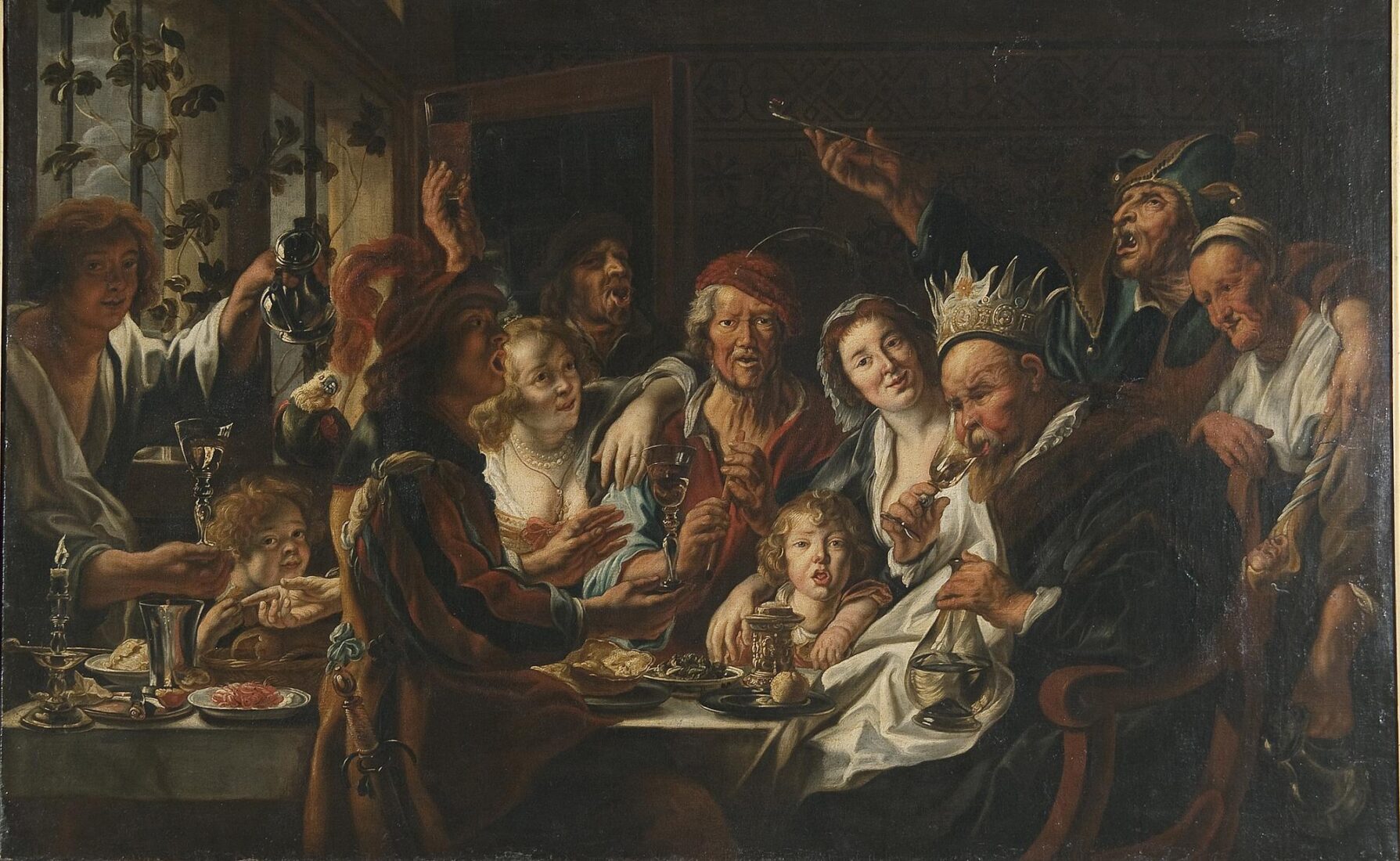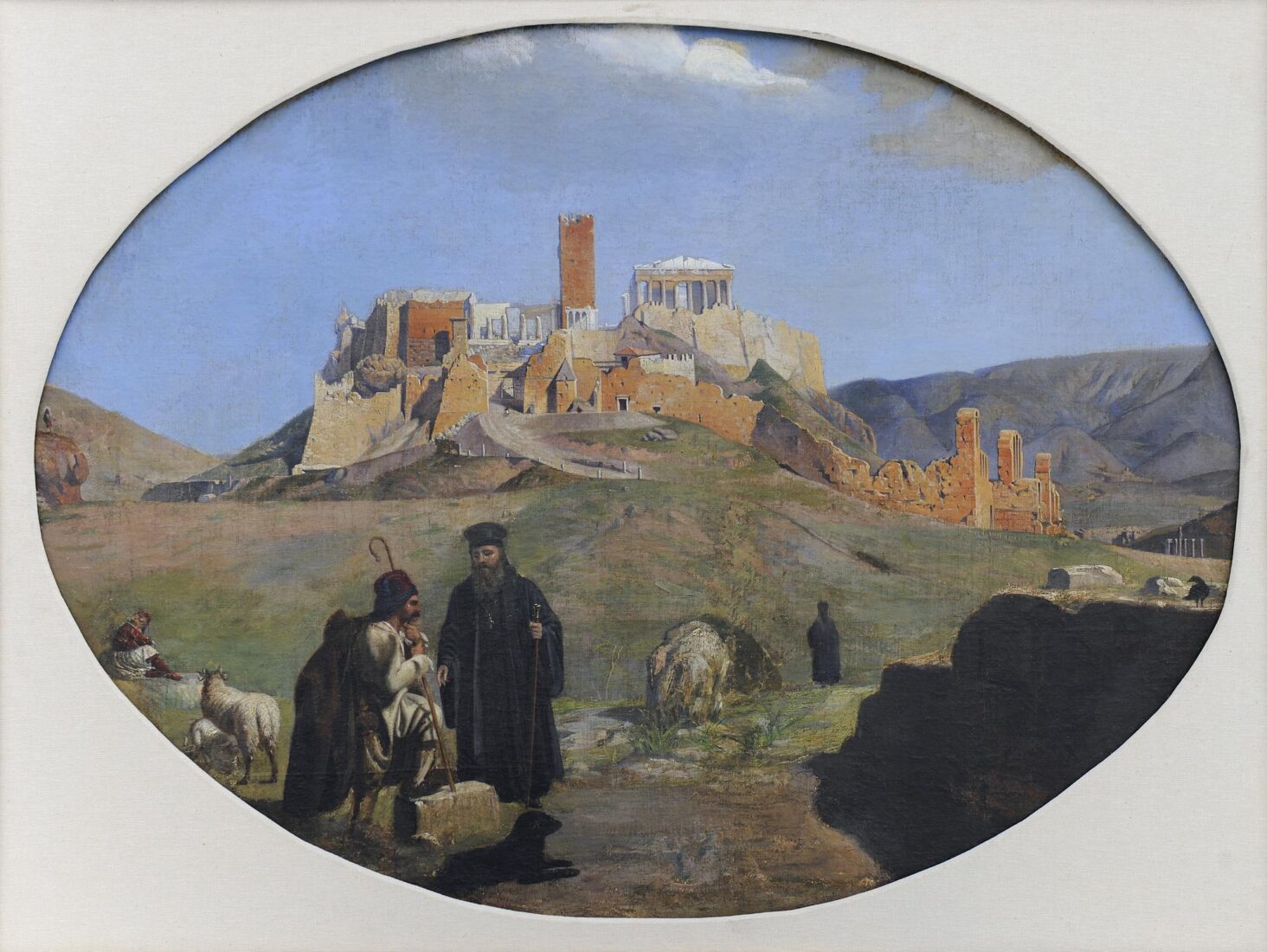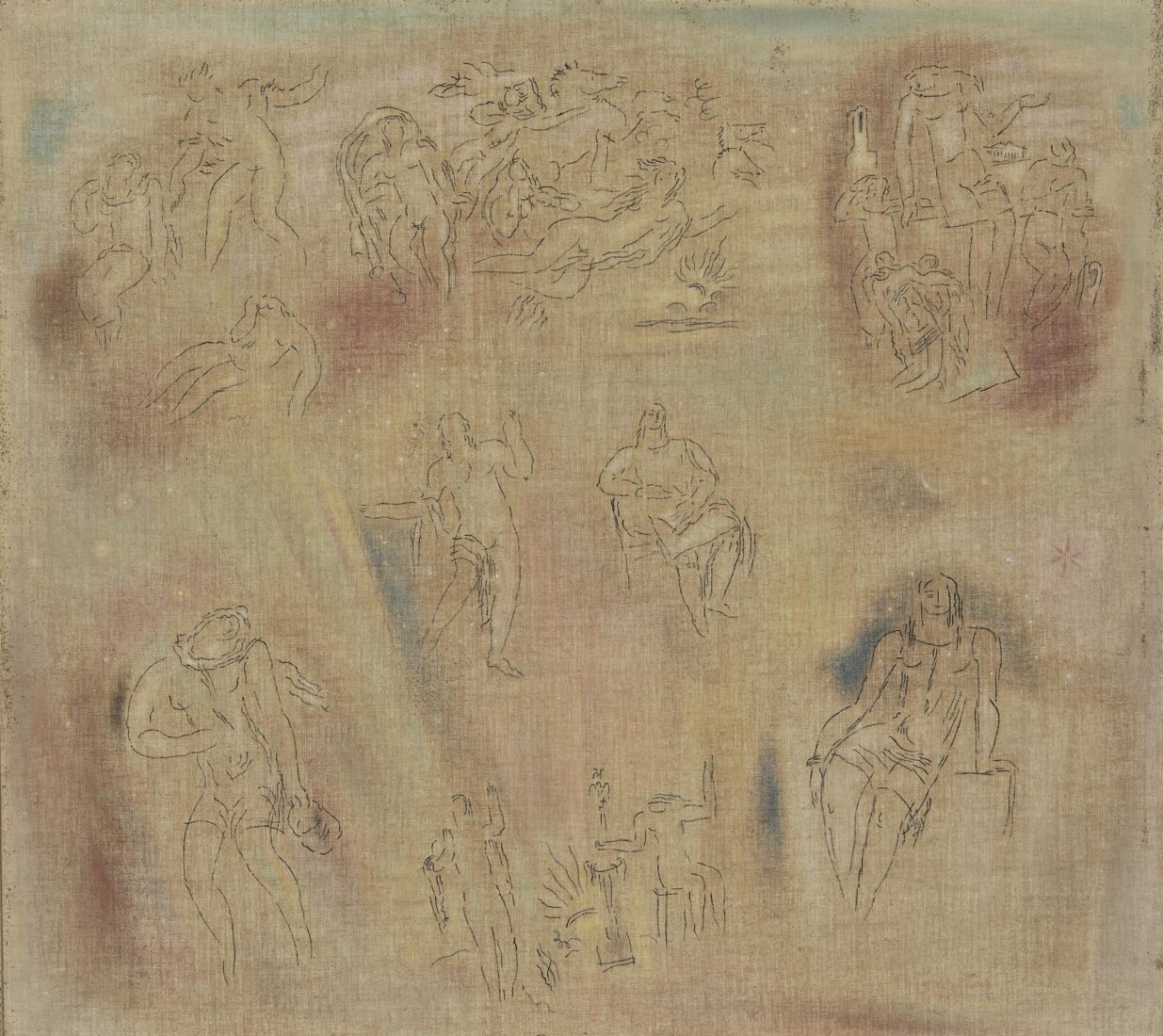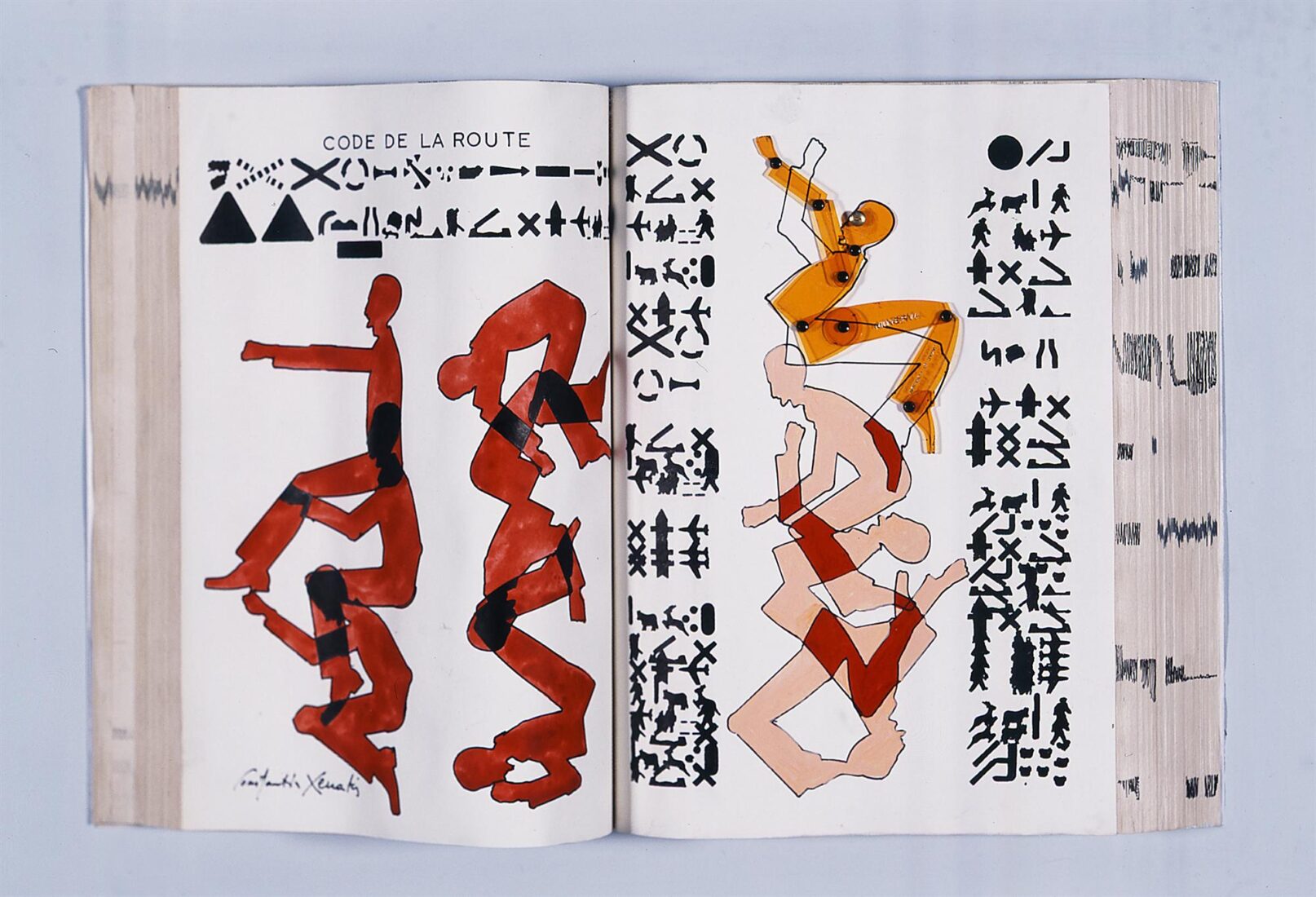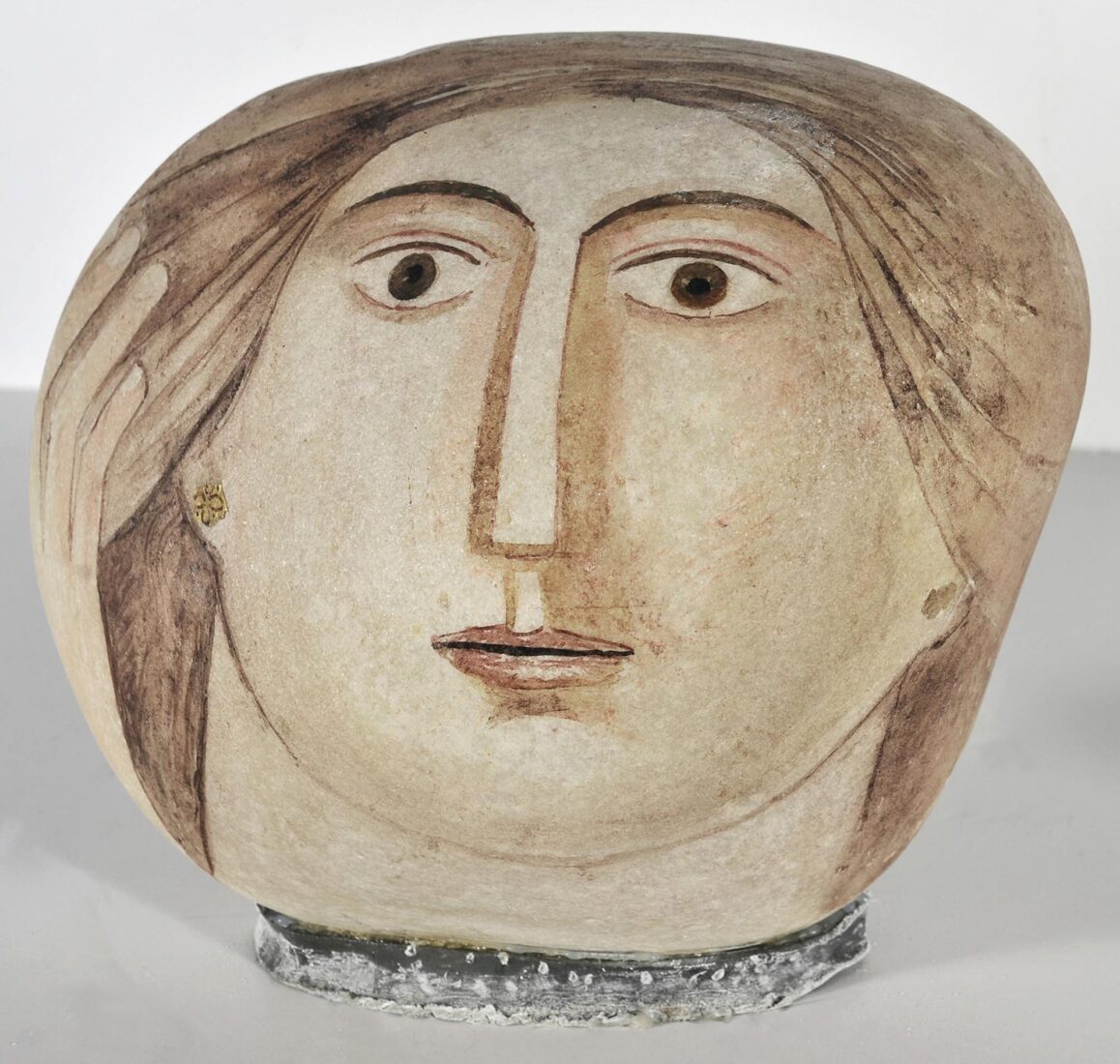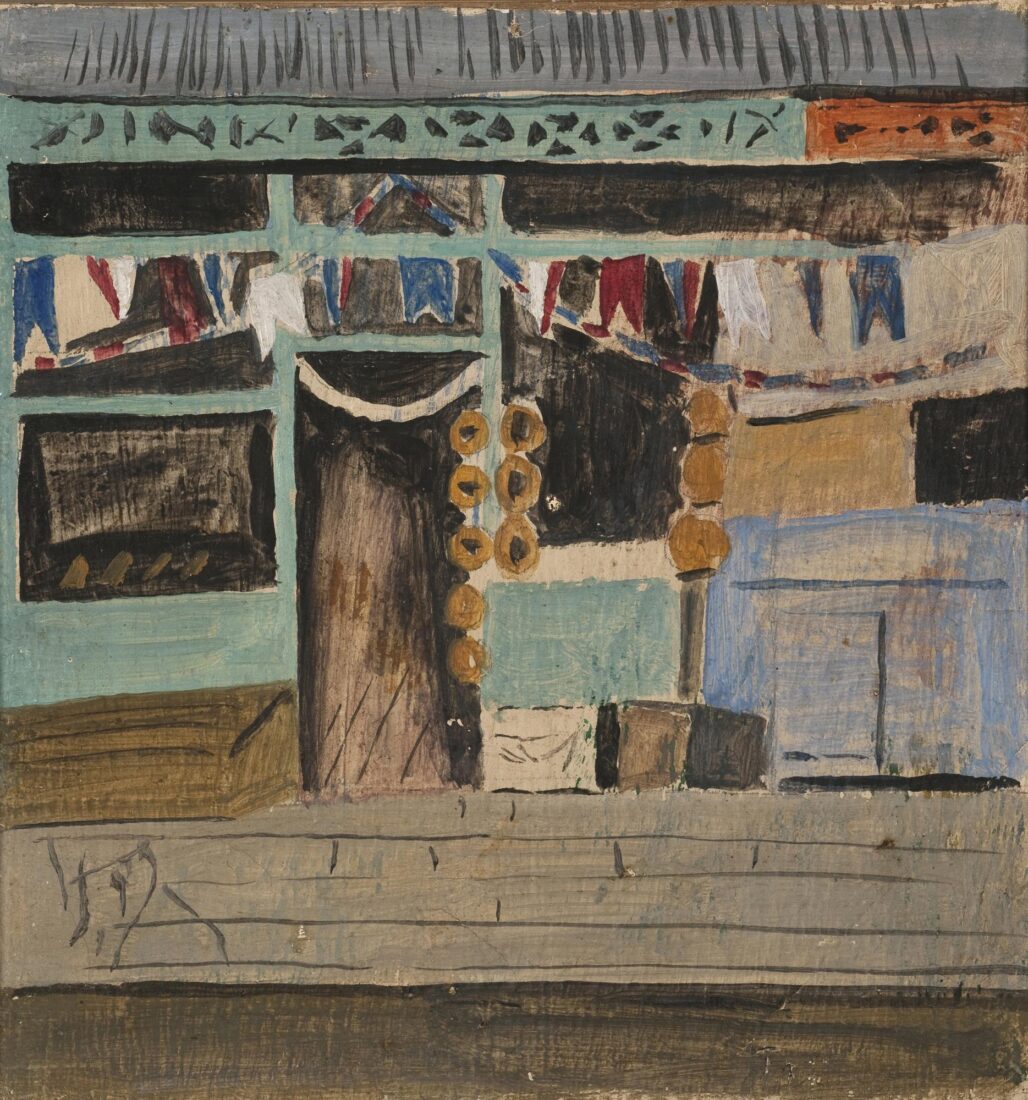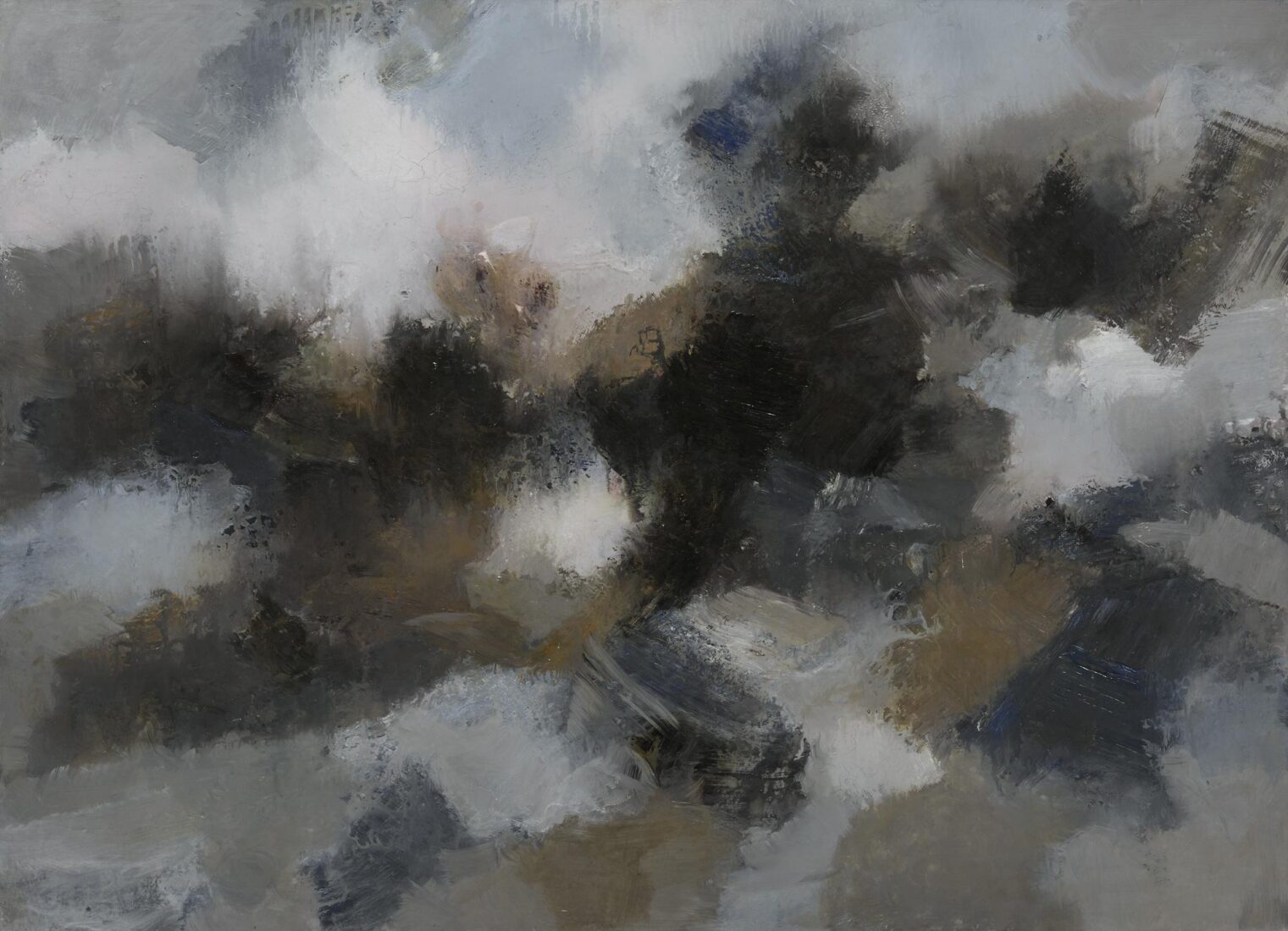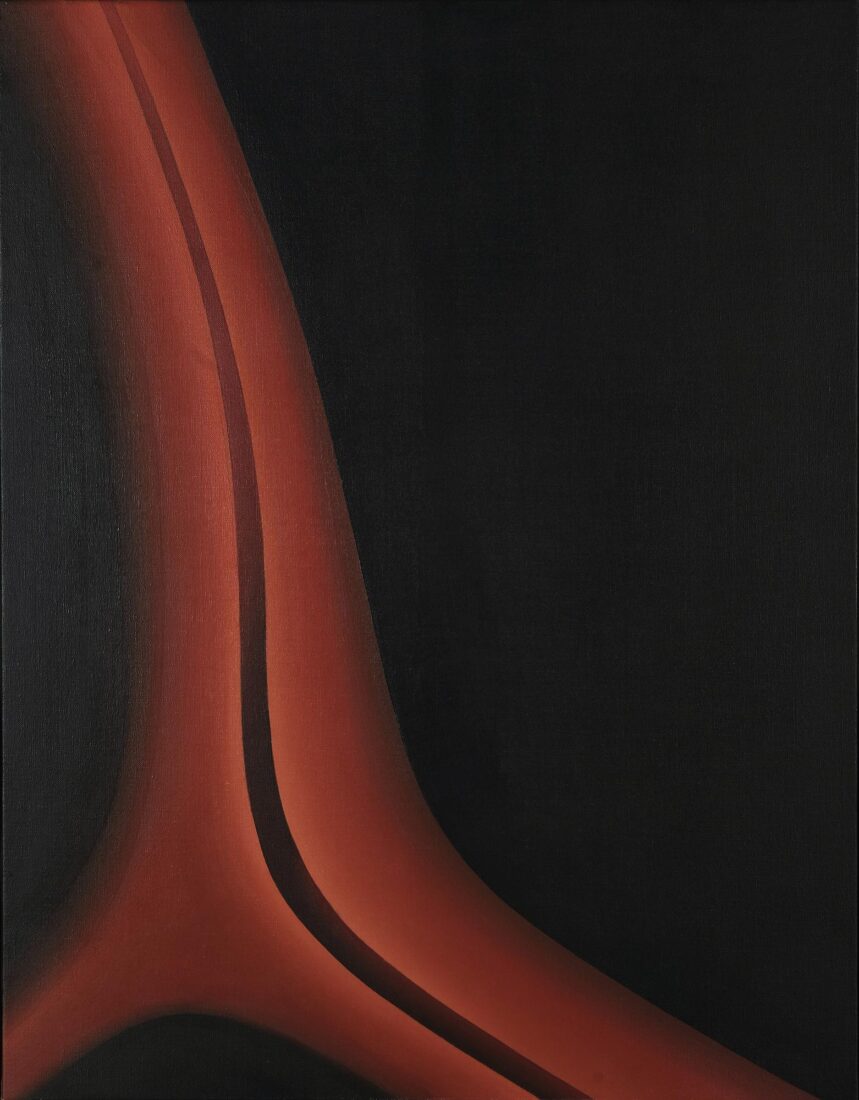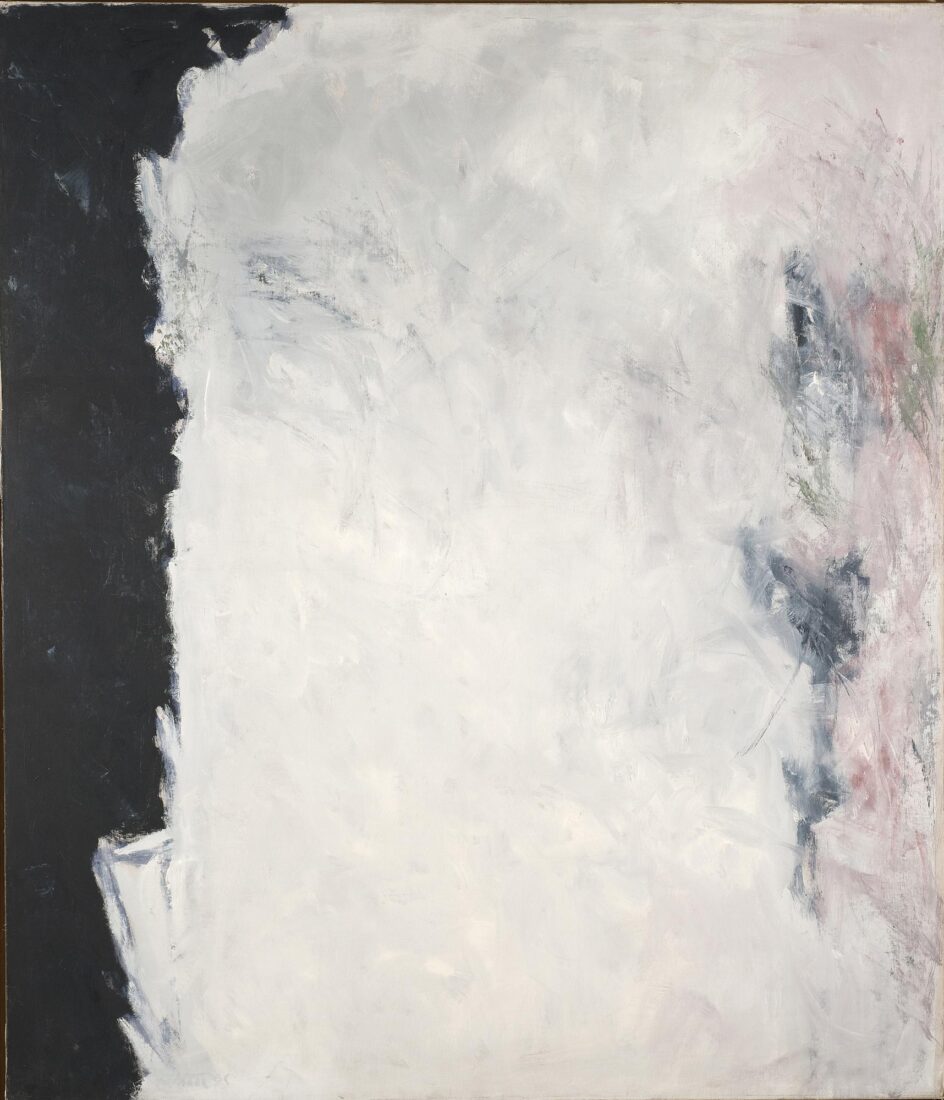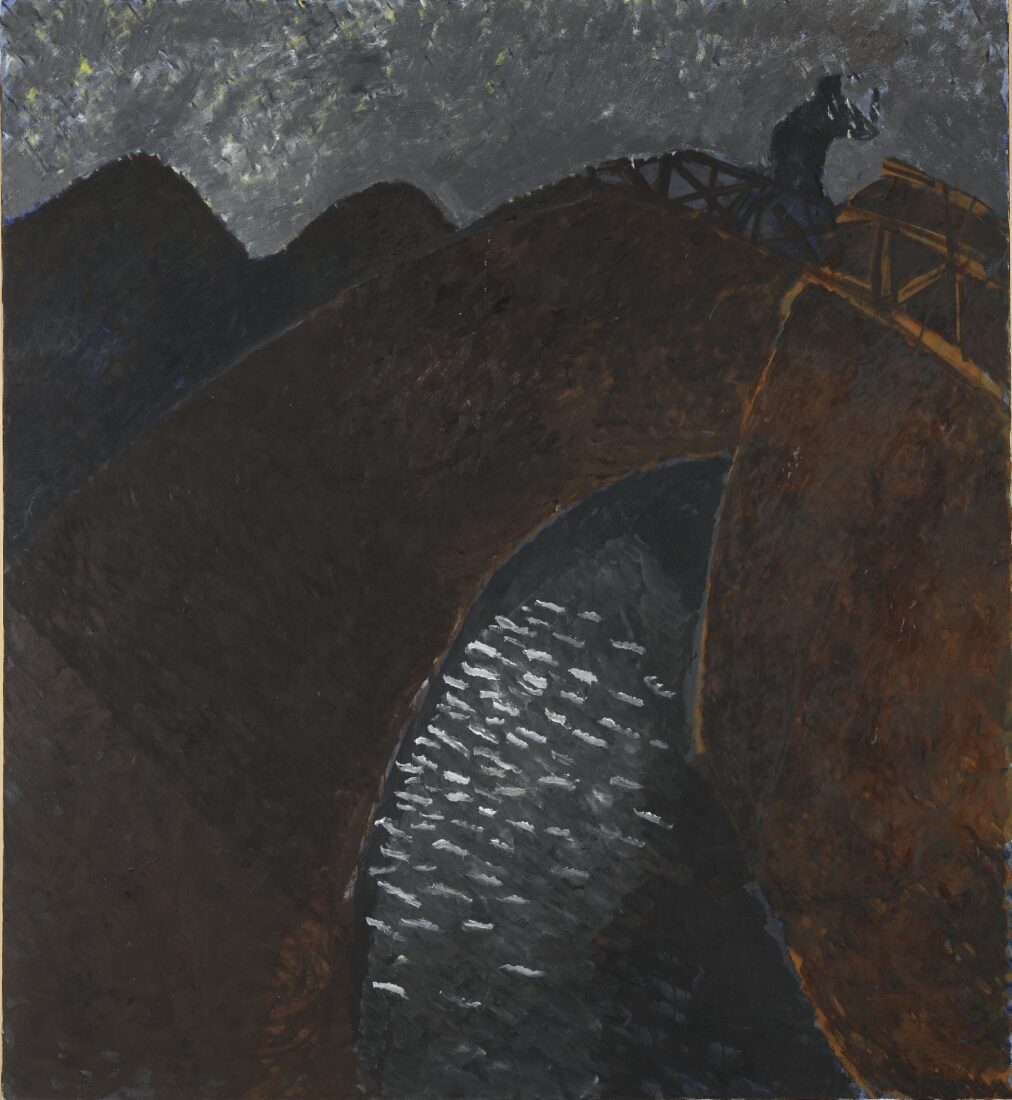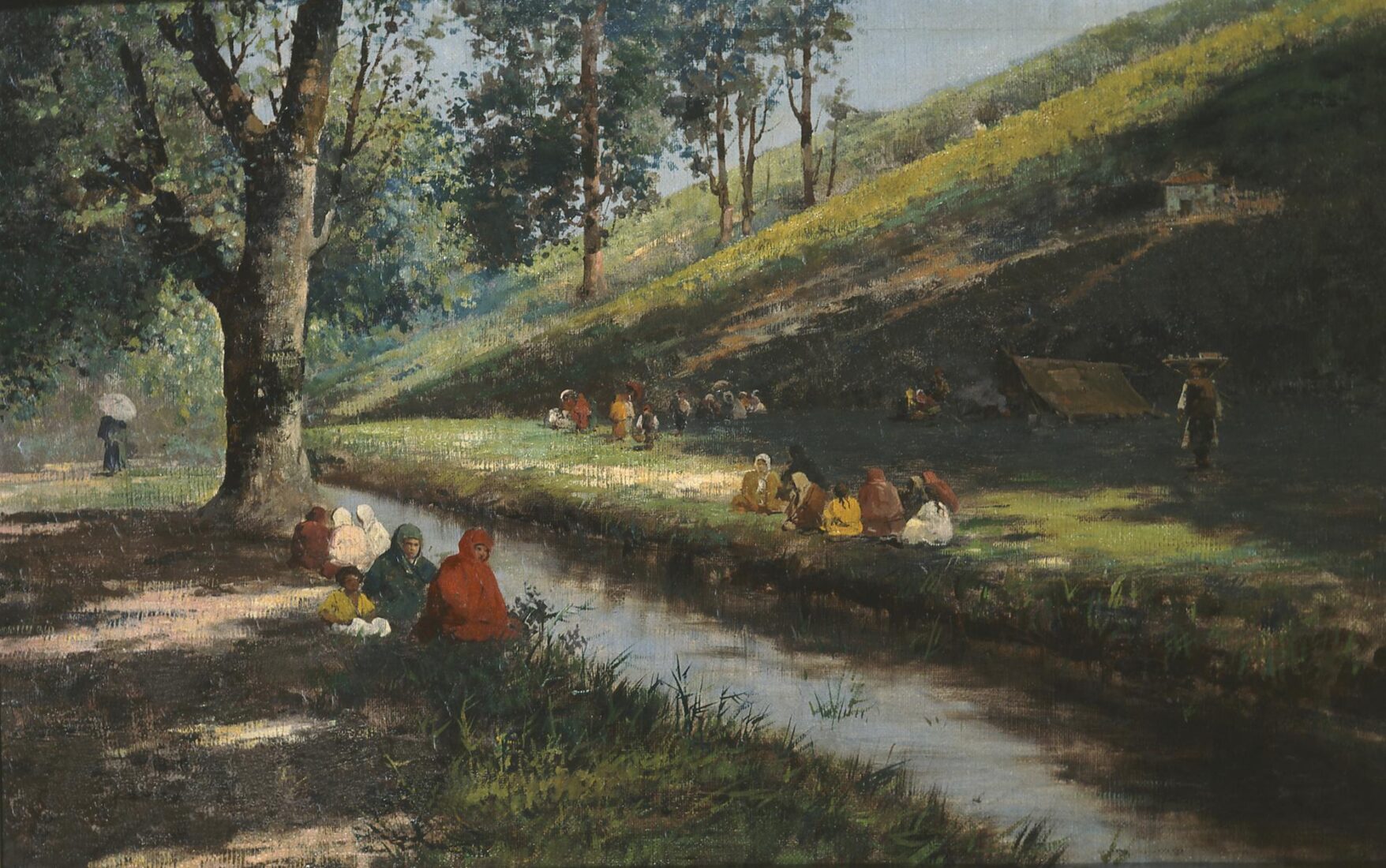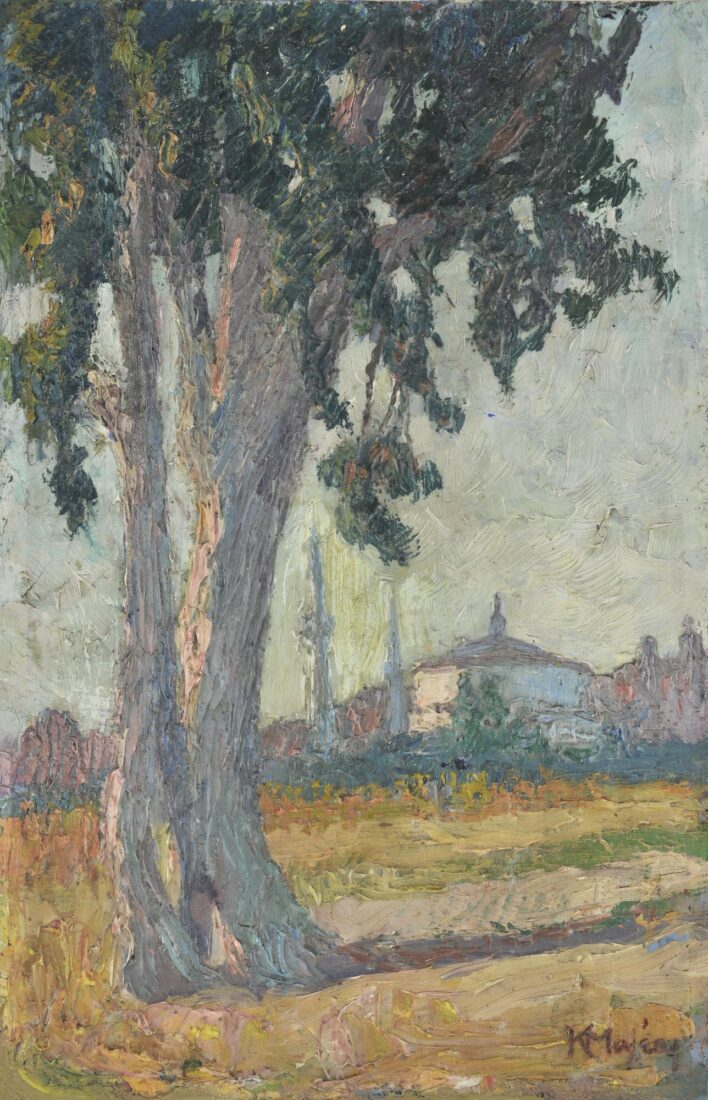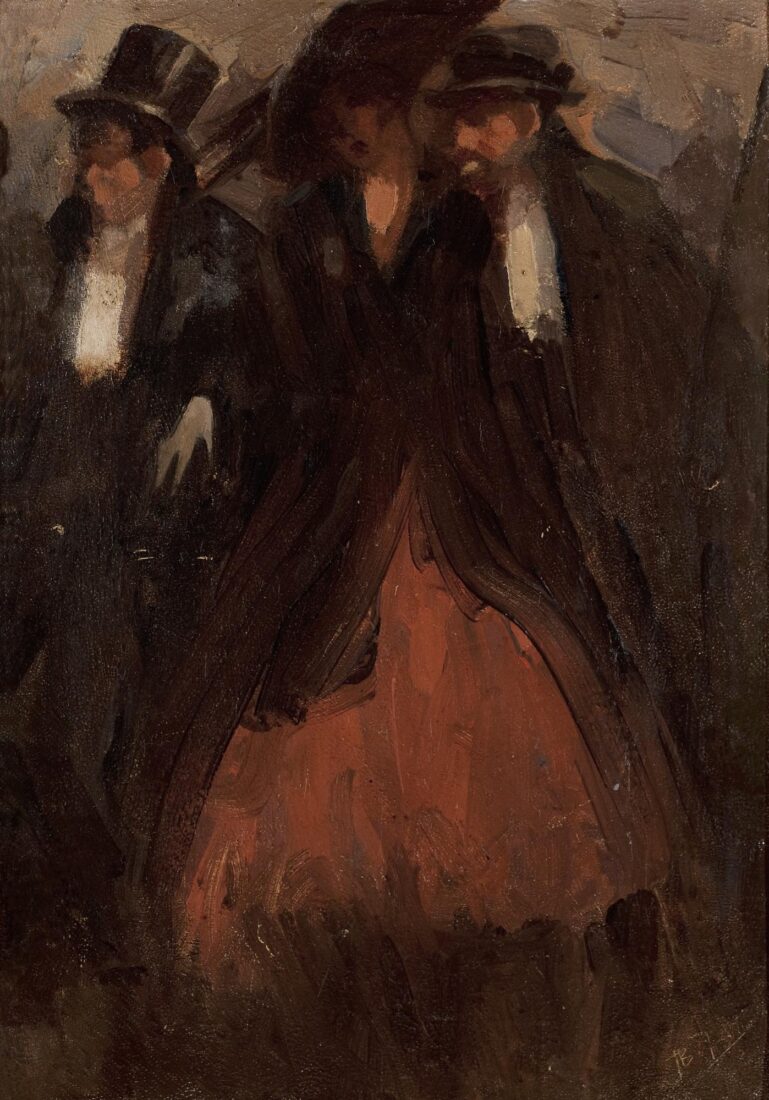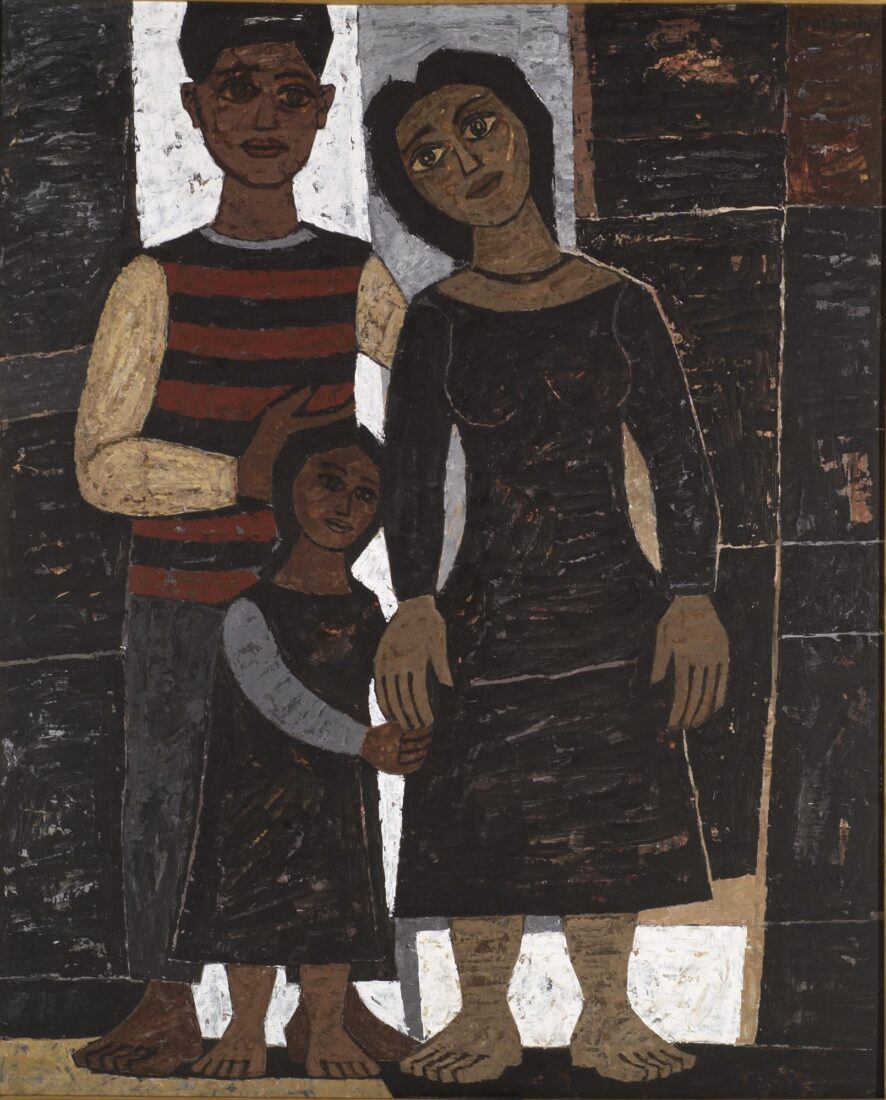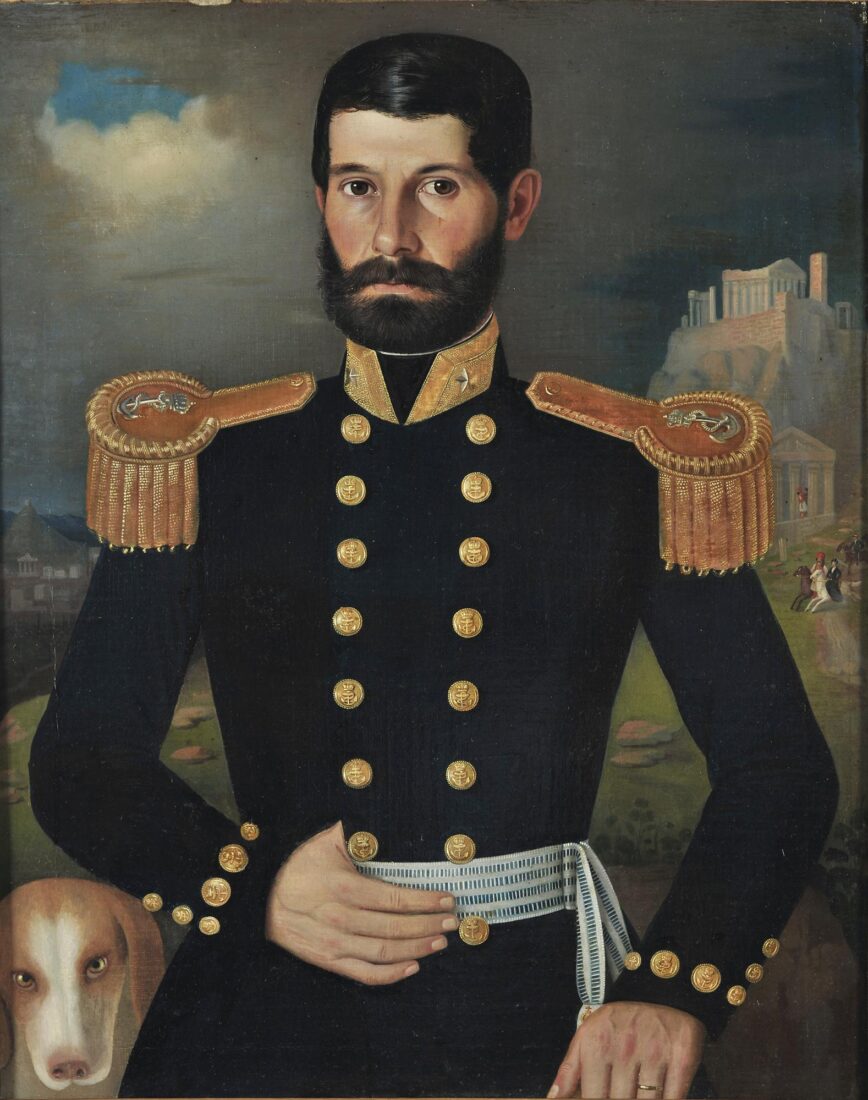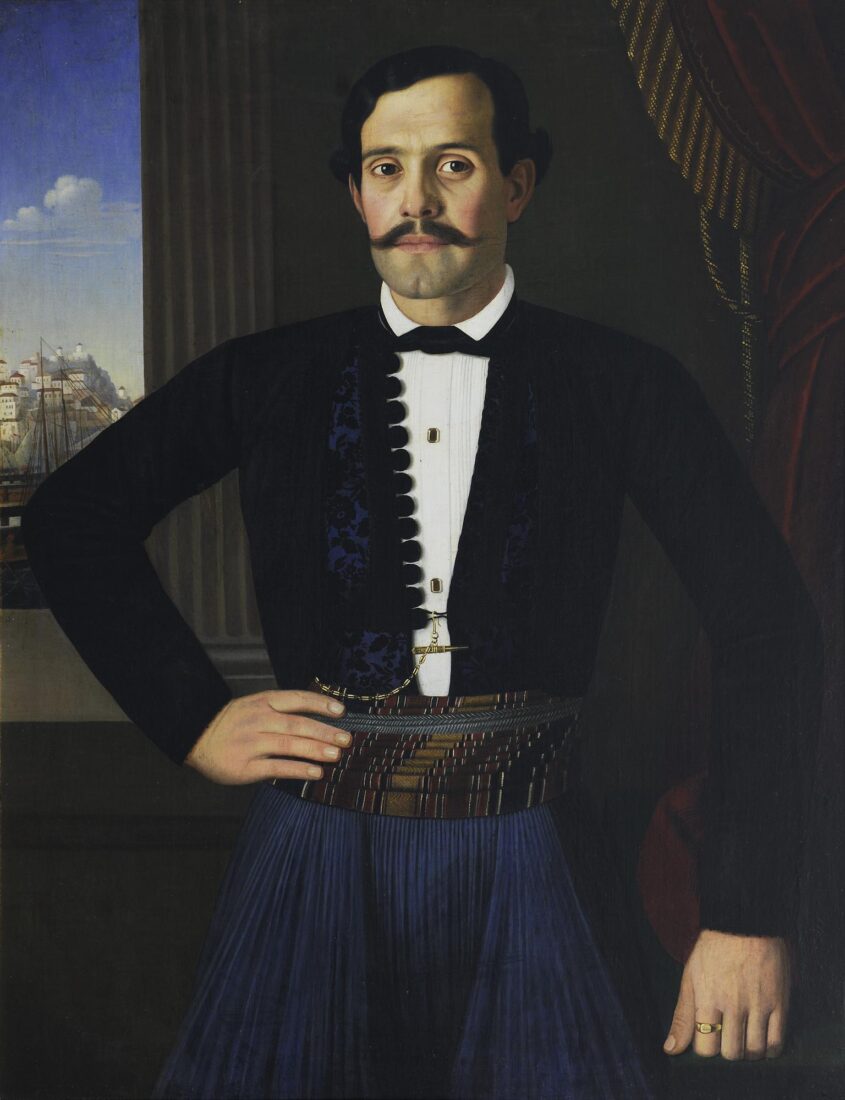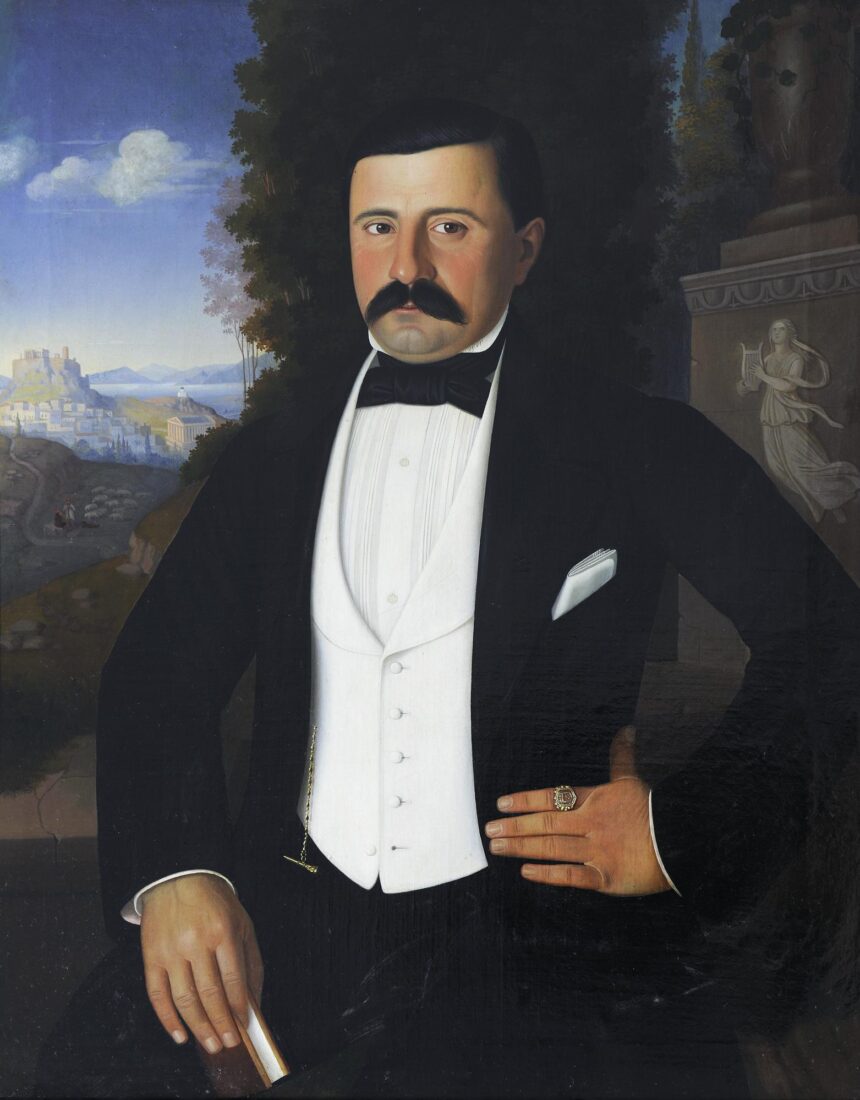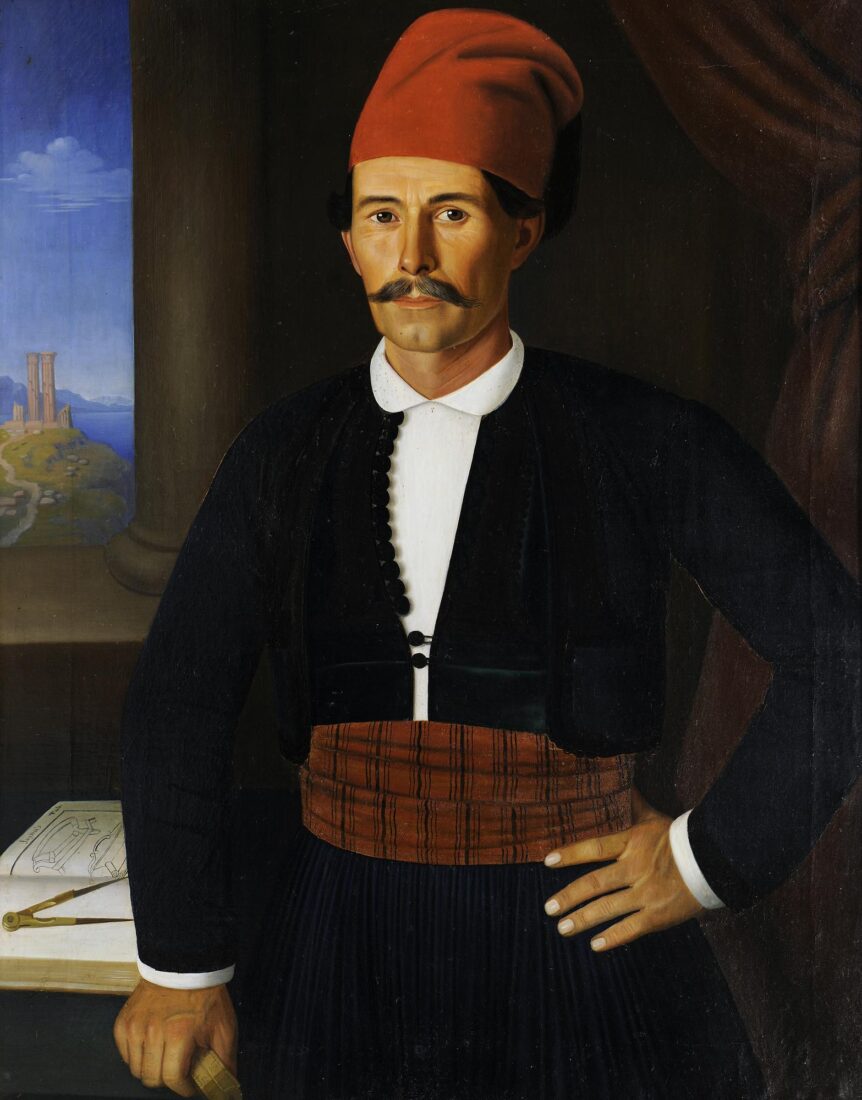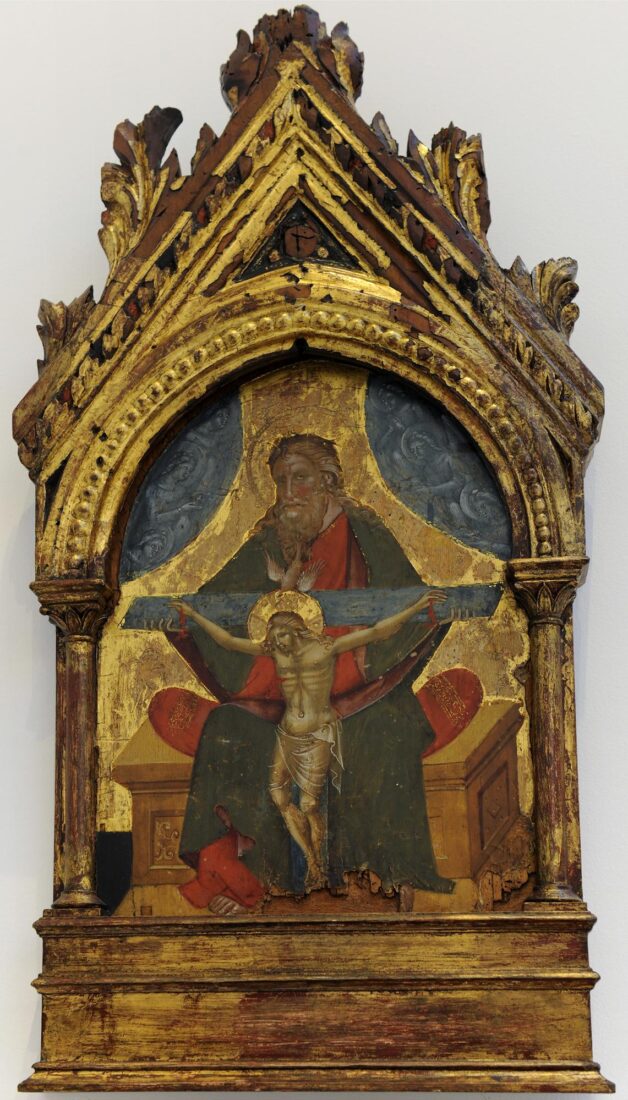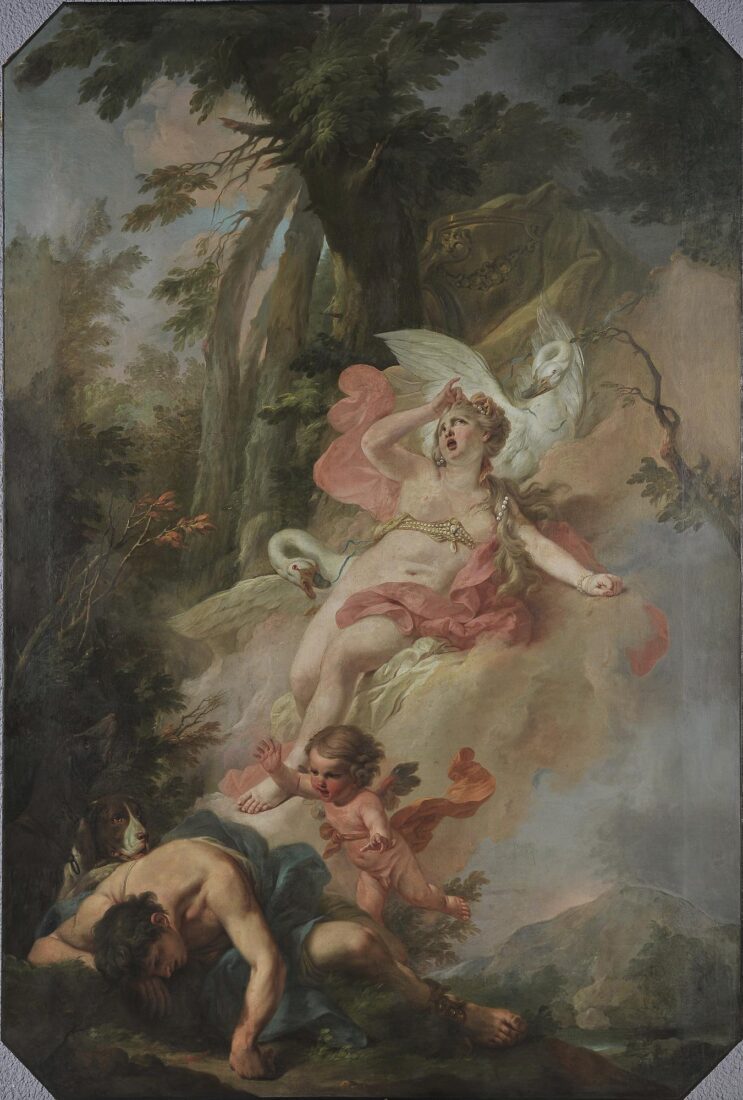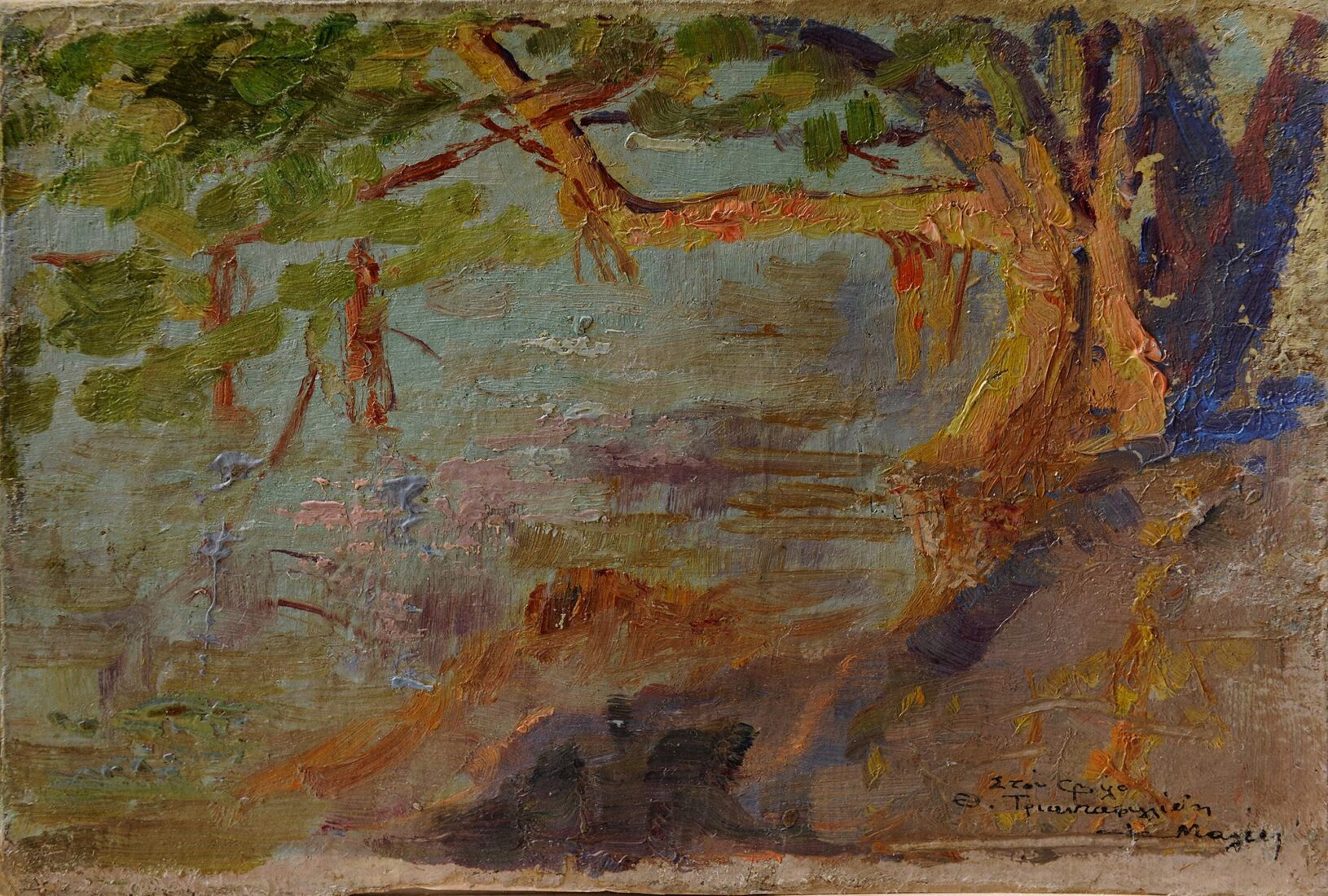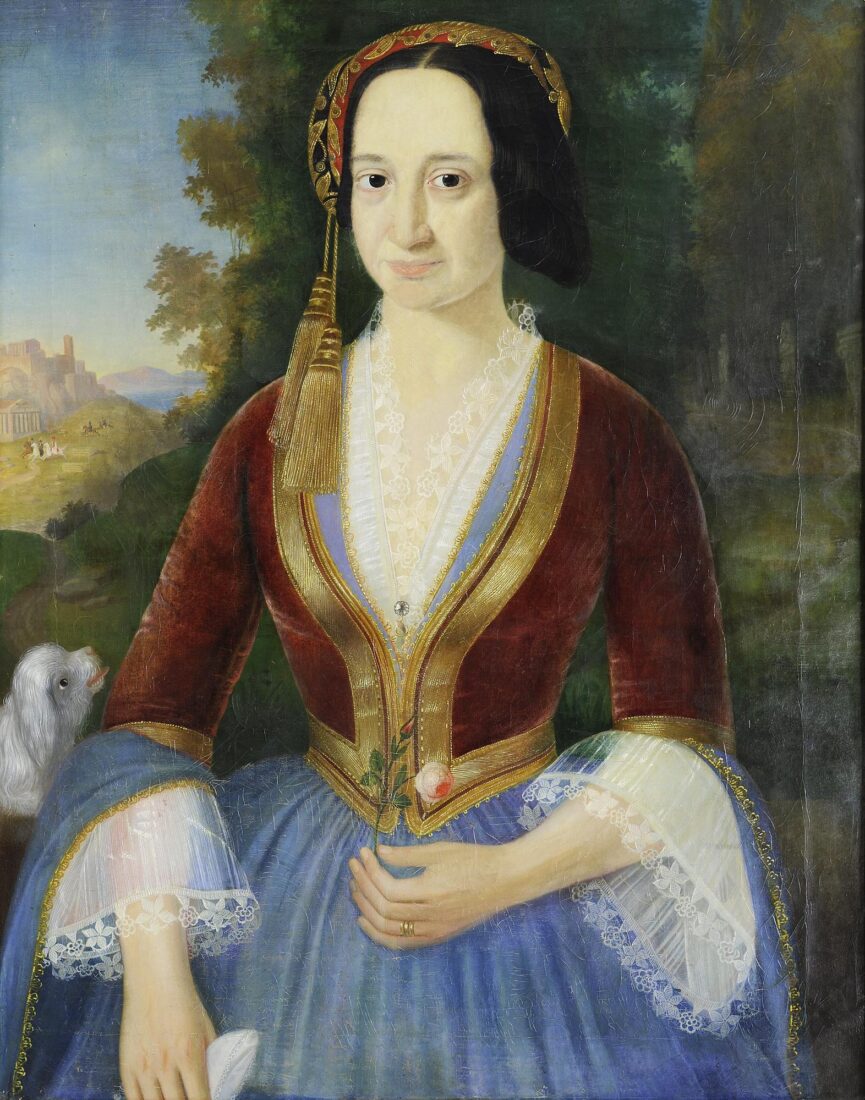Willem van Mieris (1662–1747), the son of the artist Frans van Mieris the Elder (1635–1682), followed Netherlandish painting traditions in pursuing everyday-life subjects, interiors, historical and mythological scenes. In “Young Woman with a Parrot”, donated by Aikaterini Rodokanaki in 1904, a delicate touch captures the figures and props (week of 20 August), while meticulously detailing the setting, accentuating interior features – for instance the carpets, reliefs, and still-life paintings – and textures.
“Outdoor Dance”, of 1738, by Franz-Christoph Janneck (Graz 1703 – Vienna 1761), the leading Austrian exponent of Rococo, is a characteristic Rococo painting in the style of Jean Antoine Watteau (1684–1721), reminiscent of the latter artist’s fetes galantes, in which carefree parties of young people are casually enjoying themselves, flirting in the countryside.
This artwork was acquired by the National Gallery in 1967 with funds from the Alexandros Soutsos Estate.
A party of aristocrats are attending an outdoor feast in the gardens of a country mansion, or palace. In the middle of the composition, a pair of human figures, apparently the hosts, open the dance (week of 9 July), while women and men around them, clad in elegant countryside attire, talk, flirt, promenade. The colours used by Janneck are made even more vibrant set against the copper substrate which he commonly used in his paintings, as is the case for the painting in the National Gallery collection.
“The feast of the Epiphany” in the National Gallery is part of the Technical University’s donation. This is probably a copy by Jordaens’s studio of the master’s work currently in the Gemaldegalerie Alte Meister (Kassel). Jordaens, a follower of Adam van Noort (1561/62–1641) got married to his master’s daughter, Catarina, who apparently became his favourite model. The artist received many commissions of his own, and worked closely with his father-in-law, as well as with Rubens (Peter Paul Rubens, 1577–1640). Similarly to his father-in-law, Jordaens maintained a large studio to handle the commissions he received; he amassed a great fortune and a notable personal art collection. He died during a cholera epidemic that swept Antwerp in 1678. A painter of historical, mythological, allegorical, religious, and genre scenes, a watercolourist, and a printmaker, he was one of the greatest 17th-century Flemish painters, alongside Anthony van Dyck (1599–1641) and Rubens.
The subject of this painting is a Flemish folk custom of celebrating Epiphany: during a long, festive banquet, a cake is served, with a black bean hidden inside. Whoever finds the bean becomes king or queen of the day, wears a crown, and chooses who sits beside them. In the six versions of this painting produced by Jordaens, the king is depicted raising his glass to toast, while the merry company cries, ‘The King drinks!’ The oldest man is depicted as king. Notably, the artist’s relatives – including his wife, daughter, father-in-law, children, and friends – served as models for the folk figures.
The oldest version – which served as model for the painting in the National Gallery – is the one in the Gemaldegalerie Alte Meister in Kassel and was produced in four distinct phases. In the first one, circa 1635, the painting was limited to the group surrounding the flute player and the elderly woman on the right. The young singer to the left was added later, and eventually a full-length male figure was also introduced. Around 1636/37, the artist’s daughter, Elizabeth, served as model for the young woman in the center. In the 1650s, the last section was added, which transformed the painting into a drinking feast, with a comic effect.
The painting in the National Gallery replicates the scene up to the third phase, depicting a cheerful social gathering, a fact that leads us to believe that it must have been produced after 1637 and before the final version.
The son of Guillaume-Thomas Taraval, appointed artist to the court of Frederick I of Sweden, Hugues Taraval after his father’s death studied at the workshop of Jean-Baptiste Pierre (ca. 1713 – 1789). A member of the Royal Academy since 1769 and inspector at Gobelins since 1783 was one of the artists who contributed to the large decorative projects carried out during the reign of Luis XVI. His favourite subjects include the love affairs of Aphrodite, such as the one with Adonis.
A youth of incomparable beauty, Adonis, the son of Smyrna, one of Aphrodite’s favourite lovers, was mortally wounded by a boar during a hunt. The work captures the moment when Aphrodite, accompanied by a cupid and two swans, discovers in shock her lover’s dead body lying on the ground, next to his two hounds. The diagonal composition, the spiralling pose of the goddess and the swans, the vestments flying back with the speed of the descent, the pink hues on the flesh and clothing, all add an air of lightness to the event, in spite of the dead body in view and the surprise, anxiety and terror evident in the faces of Aphrodite and the cupid. Even though a forgotten artist today, Taraval is a typical example of 18th-century court painting in France.
